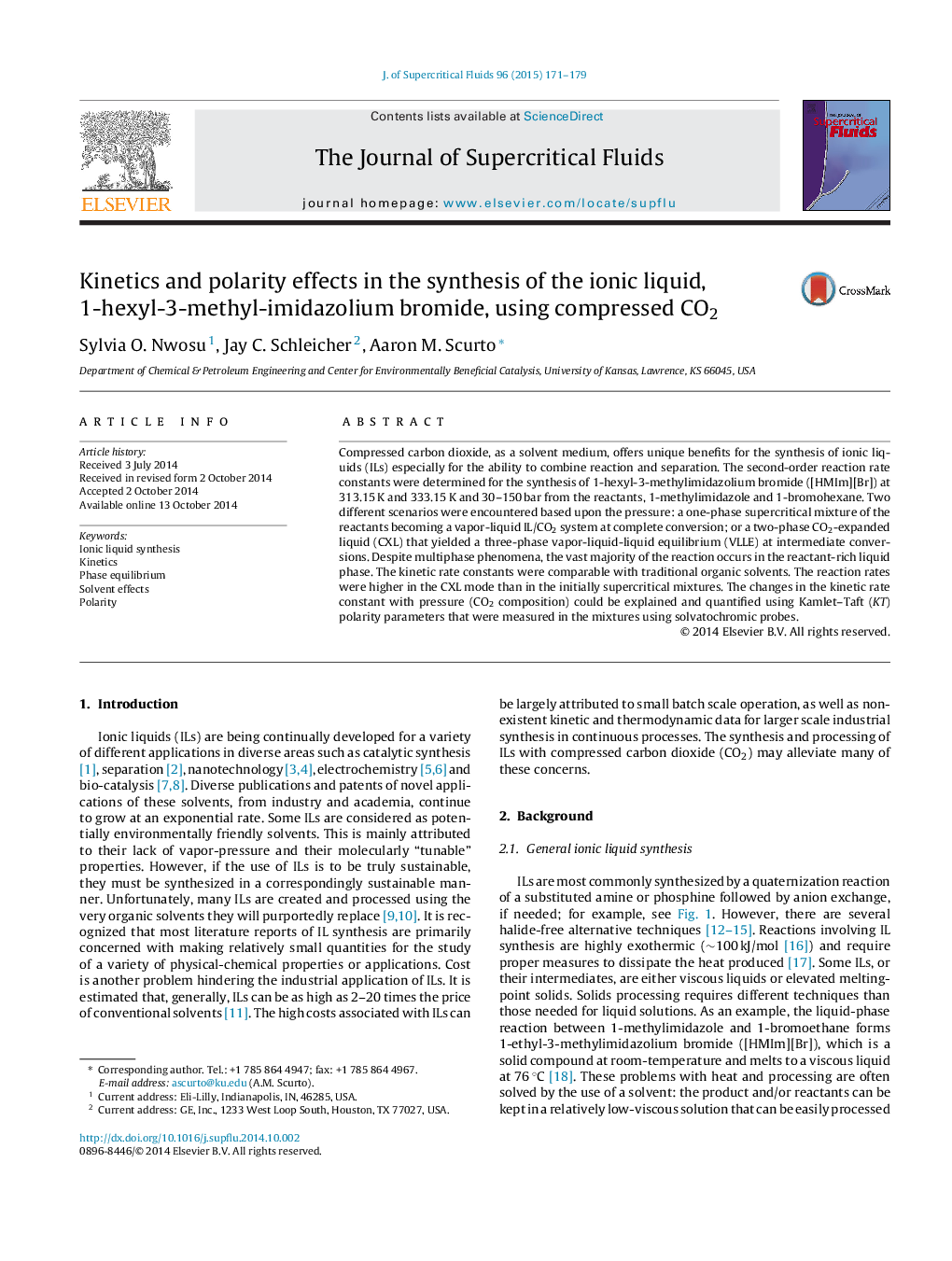| Article ID | Journal | Published Year | Pages | File Type |
|---|---|---|---|---|
| 230453 | The Journal of Supercritical Fluids | 2015 | 9 Pages |
•CO2 aids synthesis of ILs with a number of “value-added” properties.•First experimentally obtained 2nd order rate constants for [HMIm][Br] synthesis in CXLs and SC CO2.•Accurate kinetics can only be obtained from precise knowledge of phase equilibrium.•Combined reaction and separation scenario possible.•Kamlet–Taft polarity parameters measured and explained CO2 effect on rate constant.
Compressed carbon dioxide, as a solvent medium, offers unique benefits for the synthesis of ionic liquids (ILs) especially for the ability to combine reaction and separation. The second-order reaction rate constants were determined for the synthesis of 1-hexyl-3-methylimidazolium bromide ([HMIm][Br]) at 313.15 K and 333.15 K and 30–150 bar from the reactants, 1-methylimidazole and 1-bromohexane. Two different scenarios were encountered based upon the pressure: a one-phase supercritical mixture of the reactants becoming a vapor-liquid IL/CO2 system at complete conversion; or a two-phase CO2-expanded liquid (CXL) that yielded a three-phase vapor-liquid-liquid equilibrium (VLLE) at intermediate conversions. Despite multiphase phenomena, the vast majority of the reaction occurs in the reactant-rich liquid phase. The kinetic rate constants were comparable with traditional organic solvents. The reaction rates were higher in the CXL mode than in the initially supercritical mixtures. The changes in the kinetic rate constant with pressure (CO2 composition) could be explained and quantified using Kamlet–Taft (KT) polarity parameters that were measured in the mixtures using solvatochromic probes.
Graphical abstractFigure optionsDownload full-size imageDownload as PowerPoint slide
